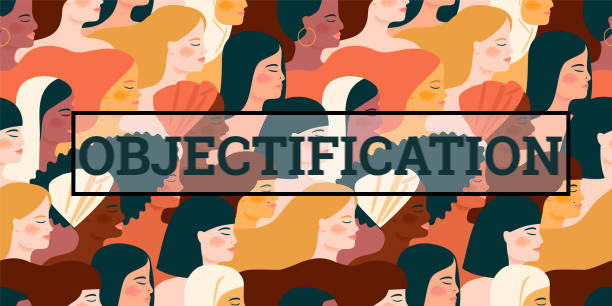Commentary: The Objectification of Women
During Women’s History Month, it is important to notice some of the issues that have faced women throughout history and today. One of these is objectification.
March 22, 2021
First, let’s begin by defining the term “objectification.”
According to a definition from Oxford Languages, objectification is the action of degrading someone to the status of a mere object. Objectification is something that women are constantly having to deal with. Whether it be in the workplace, at school, home or simply in a public setting, women are often objectified by men and in some cases by themselves, which can be even more harmful.
Many are quick to assume that when speaking about the objectification of women, people are simply referring to the male gaze, or viewing women as a sexual object, when in fact there are many ways a woman can be objectified, which is why it is so prevalent. According to the “Feminist Perspectives on Objectification,” an article from the Stanford Encyclopedia of Philosophy, there are ten features identified by philosophers Martha Nussbaum and Rae Langton that are involved in the idea of treating a person as an object:¬†
- Instrumentality: the treatment of a person as a tool for the objectifier’s purposes;
- Denial of autonomy: the treatment of a person as lacking in autonomy and self-determination;
- Inertness: the treatment of a person as lacking in agency, and perhaps also in activity;
- Fungibility: the treatment of a person as interchangeable with other objects;
- Violability: the treatment of a person as lacking in boundary-integrity;
- Ownership: the treatment of a person as something that is owned by another (can be bought or sold);
- Denial of subjectivity: the treatment of a person as something whose experiences and feelings (if any) need not be taken into account.
- Reduction to body: the treatment of a person as identified with their body, or body parts;
- Reduction to appearance: the treatment of a person primarily in terms of how they look, or how they appear to the senses;
- Silencing: the treatment of a person as if they are silent, lacking the capacity to speak.
These behaviors manifest themselves in many ways and can reap many negative effects on women‚Äôs mental health. ‚ÄúObjectification theory posits that constant exposure to sexually objectifying experiences and images socializes women to internalize society‚Äôs perspective of the female body as their own primary view of their physical selves,” according to Fredrickson and Roberts, 1997; Szymanski and Henning, 2007.
This internalization is often referred to as self-objectification, and it is characterized by varying levels of thoughts and behaviors such as self-conscious body monitoring, surveillance, and comparison of one‚Äôs body or body parts to the cultural standard or ideal, according to Emma Rooney in The Effects of Sexual Objectification on Women’s Mental Health. In other words: many women, because of constant objectification by external sources, have begun to adopt this into their own lives in the form of self-esteem issues, body dysmorphia, and eating disorders.¬†
In order to avoid this, we as a society need to progress. Rather than allow ourselves to be brought down by objectification, and allow it to manifest itself in such negative behaviors, we must change our ways through education.  Educate young men in schools on what objectification is, the different forms of objectification, how it affects women in addition to how it can be avoided. Rather than teach women to cover themselves and their bodies with unreasonable dress codes and expectations, as a society, we should teach women how to support and empower each other, as well as embracing their femininity.


















